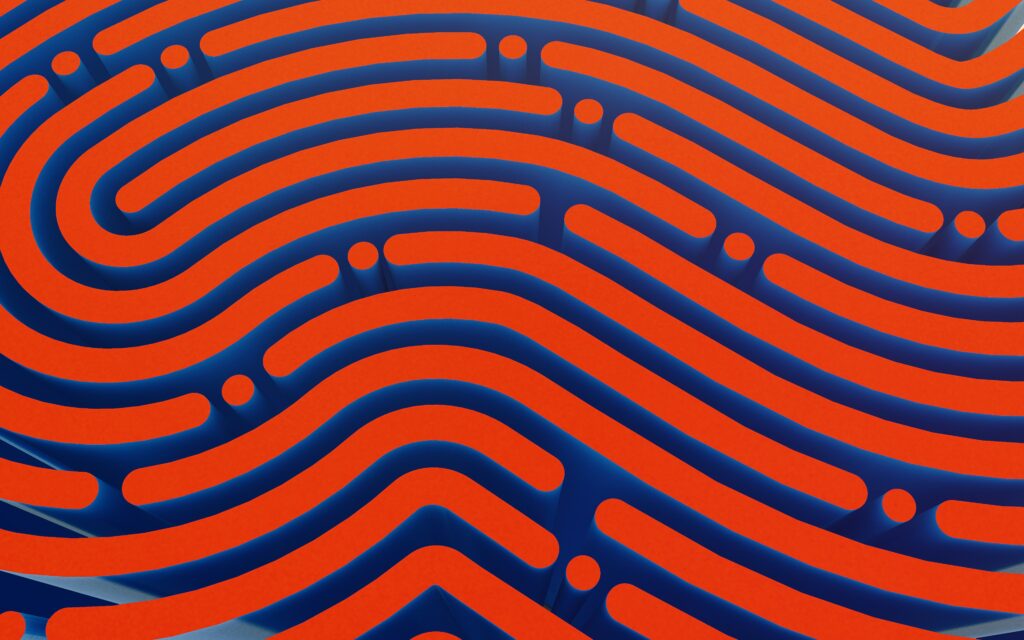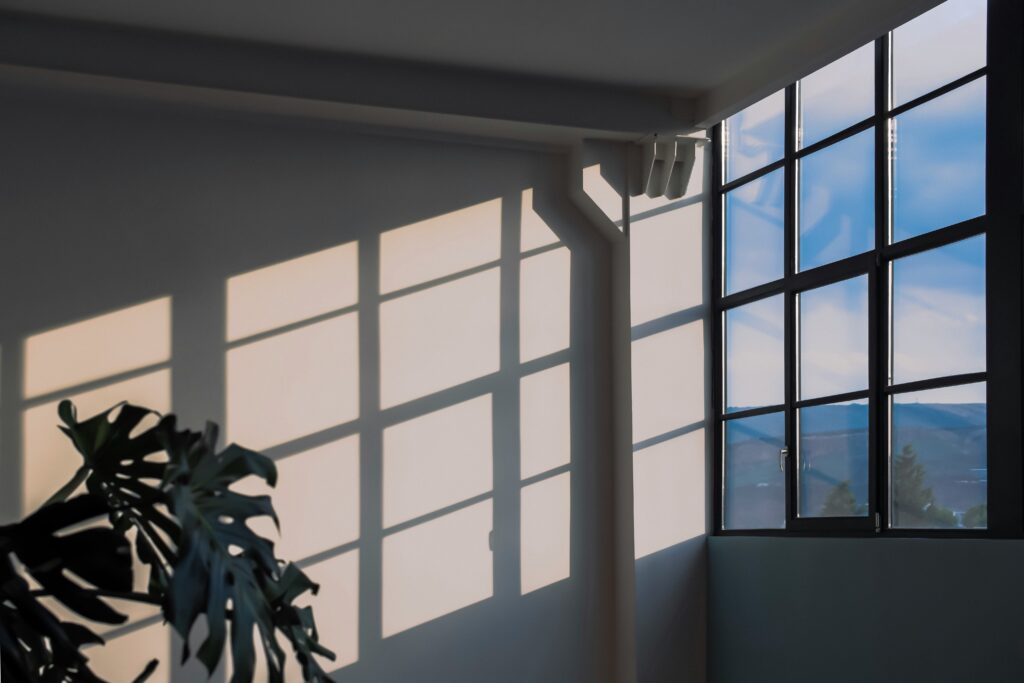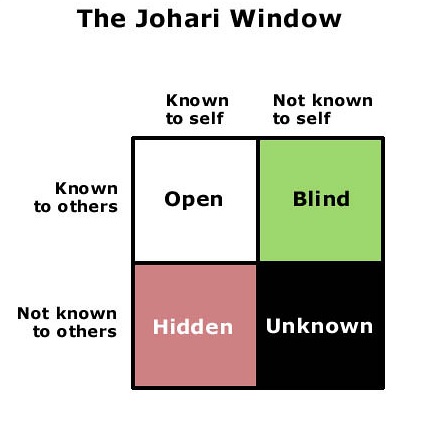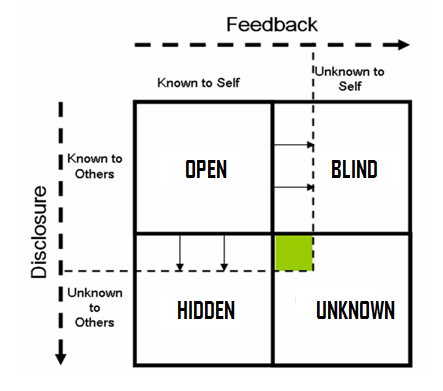
A grounded goal — 9 criteria for a good goal setting
What you don’t know about yourself could be pulling the strings

Self-awareness is the starting point of any real change and often the hardest to reach.
Not because we’re unwilling, but because so much of our inner world operates just beneath the surface. We carry assumptions we’ve absorbed, habits we’ve never questioned, and ways of being that once protected us but may no longer serve us.
Change doesn’t begin with answers. It begins with noticing, by bringing into view what has long remained unseen. The Johari Window is one of the most intuitive and practical models to explore that process.
In 1955, psychologists Joseph Luft and Harrington Ingham developed a model to explore how we understand ourselves and how others perceive us. They combined their first names (JO + HARI) to create what became known as the Johari Window
At its core, the model is a four-part grid. It maps what is known and unknown, both to ourselves and to others. It offers a way of visualising self-awareness not as something fixed, but as something relational and evolving.

The four quadrants are:
What makes the Johari Window so enduring is its simplicity. But like many simple models, it points to something more complex: how being seen, by ourselves and by others, is rarely easy, but often essential.
Self-awareness has long been recognised as central to growth. As Carl Jung observed, “Until you make the unconscious conscious, it will direct your life and you will call it fate.” The Johari Window offers a concrete way to begin this work of discovery.

Each quadrant can be seen as a different path toward greater authenticity:
The Johari Window suggests that growth doesn’t happen by willpower alone. It often happens by bringing what is unconscious, hidden, or unacknowledged into conscious awareness.
The Johari Window becomes powerful when we put it into practice. Here are a few ways to explore your own blind spots and hidden areas:
Choose some people you trust (friends, family, …) Before seeking this kind of feedback, consider your relationship with this person carefully. Choose someone who genuinely cares about your growth and has shown they can be direct without being cruel. If you're currently in difficult relationships or environments where feedback might be weaponized against you, consider starting this exploration with a professional first. and ask them questions like:
You might be surprised by what you hear. Some of it may feel uncomfortable at first. Which usually means they’re worth reflecting on. Pay attention to how the feedback lands. Constructive feedback, even when it stings, usually comes wrapped in care. If someone seems eager to tear you down or delivers harsh criticism without compassion, that reveals more about them than about you. Trust your instincts about whose perspective is worth taking seriously.
Write down carefully what you hear. Notice your first reactions and write them down too. Do you feel defensive? Relieved? Curious? Your emotional response can reveal just as much as the feedback itself. Remember, there's no timeline for this work. If the questions feel too vulnerable right now, that's valuable information too. You can start with safer questions or wait until you feel more ready. The discomfort will likely always be there to some degree. It doesn't mean we should stop; it signals we're approaching something meaningful. Nonetheless, we should always proceed with care. Once this is done, the real work starts, ask yourself “What do I want to do about this information and those emotions?
Look for patterns; when multiple people reflect something similar, it’s a sign that you’ve uncovered a genuine blind spot. This is crucial as patterns that multiple people notice often reveal something important about ourselves and how we show up in our relationships.
Getting feedback doesn’t mean doing it alone. What’s invisible to us can be obvious to others. Often, it’s glaringly obvious to a professional. That’s one reason coaching can be effective: it creates a safe space where what’s hidden can come into focus, gently but clearly.
The other side of self-awareness isn’t about receiving feedback, but about what we choose to reveal. All of us carry parts of ourselves that remain hidden, sometimes out of protection, sometimes out of shame, sometimes simply because we’ve never found the right moment to share them. Learning to bring pieces of this hidden area into the open can be profoundly liberating. It reduces the energy spent keeping the mask on and often deepens our sense of connection with others.
But sharing isn’t always straightforward. Vulnerability doesn’t always land where we hope it will. Some people might misunderstand, judge, or even use what we share against us, while others may simply not know how to hold it with care. That’s why choosing the right person is just as important as choosing what to share. Trusted friends, supportive family, or professional spaces like coaching and therapy offer the kind of safety where sharing can genuinely liberate rather than reinforce insecurity.
To identify what you want to share and to whom, you can ask yourself questions like:
Writing about what you’re holding back, even if no one ever reads it, can help clarify what feels heavy to carry alone and what might be ready to share.
A gentle way to practice is to start small. Share something that feels personal but not overwhelming, and pay attention, both to how it feels in your body and to how the other person responds. If the response is supportive, you can go deeper over time. If it’s dismissive or unkind, that’s valuable information about where your vulnerability is and isn’t welcome. Your emotions are good guides here: they can tell you whether you’re ready to share, as much as whether the other person feels safe enough for you.
In coaching, this process unfolds almost naturally. The space is intentionally designed to be free of judgment, a place where what’s been carried in silence can finally be spoken. When those hidden pieces are revealed, they don’t just change the way others see us; they change the way we see ourselves. Sharing with a professional often offers the safest path, as your vulnerability will be met with support and care. Professionals remain human. Occasionally, they may react poorly due to their own unresolved issues or lack of professionalism. If something feels off, listen to that instinct. It may mean you’re not ready to share yet, or that the fit with this professional isn’t right, and in that case, it’s worth finding someone else.
The most mysterious area of the Johari Window is the unknown: the aspects of ourselves that neither we nor others can clearly see. Far from being a gap or weakness, this area holds potentialities. It’s where untapped strengths, hidden patterns, and unexplored desires live.
We usually encounter the unknown in moments of change, when life challenges us in ways we’ve never experienced before. A new role, a crisis, or an unexpected opportunity can bring forward qualities we didn’t realise we had. Sometimes these discoveries feel empowering, other times unsettling, but they always expand our sense of who we are.
This quadrant is less about looking for answers and more about cultivating curiosity. Explore experiences, pay attention to what energizes you, or journal about moments when you surprised yourself. These create conditions where the unknown might gradually become known. What emerges isn’t always predictable, and that’s the point. Transformation doesn’t come from rehearsing who we’ve always been, but from allowing new possibilities to take shape.
The Johari Window is powerful in its simplicity, but like any model, it has limits.
The complexity beneath the surface: While the Johari Window provides a useful framework, human psychology rarely fits neatly into boxes. Past trauma can make certain areas feel unsafe to explore. Mental health conditions might affect how we perceive feedback or our readiness to be vulnerable. Some patterns aren’t just “blind spots” to discover; they might be protective mechanisms we developed for good reasons. The model is a starting point for reflection, not a complete map of the human psyche.
Cultural differences: Not everyone grows up in an environment that encourages direct feedback or self-disclosure. In some cultures, privacy is a form of respect, and indirect communication or maintaining harmony are more valued than individual self-awareness. Like anything, honor what feels right for you.
The blind spot isn’t always “truth”: What others see in us may be projection as much as perception. Feedback can be a mirror, but sometimes it reflects more about the giver than about you. If something feels painful, notice the feeling, but also remember you have the final say. Not all feedback is accurate, and you’re the one who decides what resonates and what doesn’t.
Past experiences with criticism: If you’ve experienced gaslighting or manipulative feedback, the idea of actively seeking input about your blind spots may feel unsafe. Your protective instincts exist for good reasons, and professional support might be a safer starting point than asking people in your personal life.
The unknown isn’t always accessible: Some aspects of ourselves may never fully come into view, and that’s okay. Growth isn’t about uncovering everything, but about finding peace with what is already there, visible or not.
When you use it thoughtfully, the Johari Window can spark meaningful conversations. It’s not the whole picture of who we are, but it can be a window worth opening.
If this framework speaks to you, there are simple ways to explore it in your own life:
In journaling: Write about parts of yourself you tend to keep private – what you notice about your own patterns of concealment and what that might reveal. Write about the feedback that has stayed with you, both the affirming and the uncomfortable. What does it reveal about how you see yourself, and how others see you? Trying to fill up each quadrant on a big sheet of paper can help visualise the process.
In everyday life: Notice your own “window” in daily conversations. What do you hold back? What do others reflect back to you? Where do you feel the edges of the unknown?
In coaching: A coaching session can help you see what’s hard to notice on your own and create a safe space to bring hidden parts into the open.
The Johari Window reminds us that we’re always more complex than we think we are. What we don’t know about ourselves isn’t a flaw to fix, it’s territory to explore. The question isn’t whether we have blind spots or hidden areas, but whether we’re ready and curious to discover what they might reveal.
Your first session is a gift, an open space to explore your needs, ask questions, and discover how we can work together.